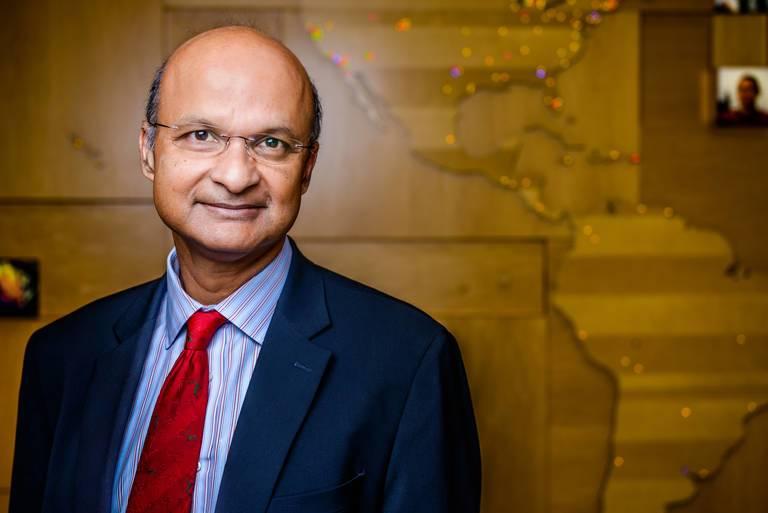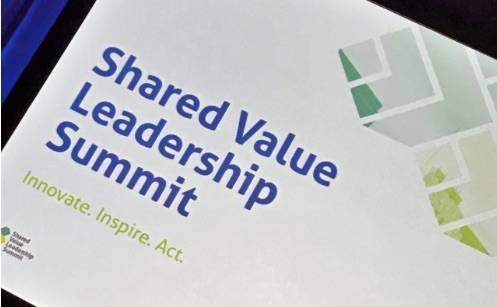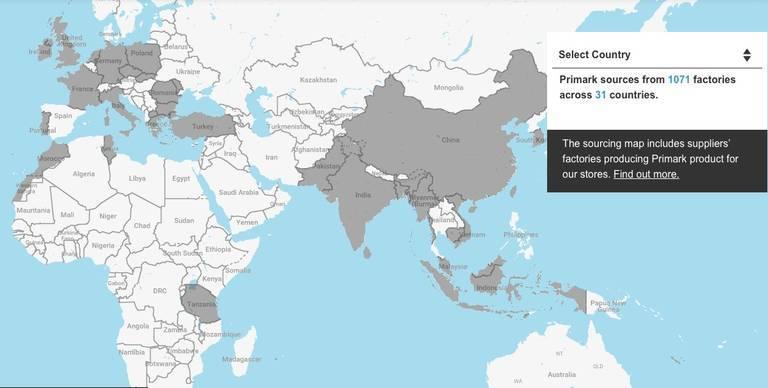Dear Baby Boomers & Gen Xers: The VW Bus is Coming Back in All-Electric Form


For baby boomers, it offered a lasting connection to 1960s counterculture. For Gen Xers coming of age in the 1980s, it was often the first vehicle teenagers drove. Soon, the Volkswagen Bus (or Microbus, or Camper Van), which first emerged in 1950 and survived during various production phases until the last one rolled off a Brazilian assembly line in 2013, is making a comeback – as an all-electric vehicle.
Last fall, Volkswagen announced that the morphed VW Bus, for now called the I.D. Buzz, will start production in 2022, with sales targeted for the U.S., Europe and China.
The news is a welcome break for Volkswagen, which is mired in the third year of a fog that started in September 2015 when the company’s U.S. division admitted “defeat devices” manipulated many of its diesel automobiles’ emissions readings. Since then, the German automaker has announced settlement after settlement to rectify this public relations nightmare. In striving to move forward, Volkswagen has pledged to expand the production of electric vehicles (EVs) on a global scale, with 16 sites in operation by 2022. The company is even redesigning its logo to align with the upcoming electric age.
That timing will be perfect for Volkswagen if the I.D. Buzz rolls off factory assembly lines as scheduled. With the vast majority of Baby Boomers well settled into retirement by then, with complaint rock-listening, indie-film consuming Gen Xers not far behind, the I.D. Buzz will be primed to take over RV parks, from California’s beaches to even the Big Apple (well, at least the RV park in New Jersey that’s closest to Manhattan).
Volkswagen says the I.D. Buzz could have a 369-horsepower electric motor (the first model in 1950 had only 30 HP), all-wheel drive and a 111 kWh battery pack in the floor of the car’s chassis that will provide a range of nearly 300 miles off a full charge. Using a VW fast-charge system, the reincarnated VW bus should be able to recharge about 80 percent of its energy capacity in 30 minutes at 150 kW. Complementing the I.D. Buzz’s retro feel will be several artificial intelligence features, from facial recognition that will unlock one’s car to allowing for “smart” driving decisions that will make the car safer to drive – and safer for cyclists and pedestrians.
And if delivered as promise, consumers old enough to remember the VW bus and young enough to watch old commercials on YouTube will appreciate the car’s timeless features, from space for small luggage behind the front hood to several interior configurations – including one for “campmobile” sleeping. This bus could spark a “summer of love” over and over again, only with Wi-Fi and FaceTime.
The I.D. Buzz could also be a defining moment for electric cars, as many consumers are still leery of moving away from ICE or hybrid engines. On one side of this equation is the expense of a Telsa – not to mention that company’s current production woes and a new reorganization announced this week. A more affordable EV, GM’s Chevy Volt, often scores positive reviews, but sports a design best described as one that plays safe. A roomy option that revives yesterday’s memories while creating lasting ones for tomorrow may just be what Volkswagen needs to shake off its recent troubles – and inspire consumers to transform their driving habits as we all look to the future of mobility.
Image credit: Volkswagen
A New Role for Brands - Vancouver


By: KoAnn Vikoren Skrzyniarz, Founder and CEO of Sustainable Brands
Last year, Sustainable Brands launched a three-year initiative to explore and better understand changing global societal aspirations. What we’ve found so far, through extensive research conducted around the world, is that there is a shift in our collective vision of how ‘The Good Life’ is defined. Increasingly, consumers today are reporting placing less value on money and status as a path toward happiness, focusing instead on the pursuit of a simpler, balanced life that is rich with meaningful connections to people, community, and the environment.
Equally importantly, we’ve also discovered with our research that, alongside these shifting priorities, consumers are expecting more from the brands they choose to support. They want to know how their purchases impact not only their own health and the health of their family, but also the health of their communities, the environment and the broader ecosystem of people involved in the manufacturing-consumption lifecycle. They want to know where and how the products they buy are made, how the workers who make them are treated and where their goods will go once they’re no longer in use.
Consumers are demanding change, and brands can deliver it: For brands to remain competitive in this changing landscape, they must evolve to answer the needs of this new generation of consumers. Having discovered that consumers are ‘redefining the good life’, we that the brands that win will be those that effectively redesign their products and services in order to deliver on these values.
This year, the global Sustainable Brands community of influential innovators, disruptive change agents, business leaders, and exemplary brand thinkers will be gathering in Vancouver for a dynamic dialogue entitled “Redesigning the Good Life’. Through plenaries, innovation labs, networking events, an activation hub, and more, we will showcase some of the world’s best brands and business leaders, who are redesigning for a flourishing future with innovation, impact and a bias for action.
We’ll share winning case studies from leading brands like BASF, Nestlé, Salesforce.org, P&G, Danone, REI, Target, and others. We’ll also be releasing our exclusive new tool, The Sustainable Brands Roadmap; a framework that provides a new lens to assess the core aspects of a sustainable brand, regardless of industry sector, and which also provides clear navigation points for the journey to becoming a truly sustainable brand.
SB’18 Vancouver: Redesigning the Good Life will equip brands with the frameworks, tools and tactics that help turn the social and environmental purpose consumers are looking for into market leading, business value. We invite you to join us June 4-7 to become an integral part of this growing brand movement, focused on delivering ‘The Good Life’ for brands, consumers, the planet and society as a whole.
3BL Media is a Major Media Partner for SB’18 Vancouver. As a valued member of the community, you can receive 20% off a pass of your choice with code ‘JoinUs’. Learn more about SB’18 Vancouver and register today.
Why Medtronic’s CEO Wants to Bring Values-Based Healthcare to Everyone


Medtronic CEO Omar Ishrak is out to remake the world’s healthcare system.
“It always bothers me that there are so many millions of people in the world who still don’t have access to something that was invented in the 1950s by our company,” Ishrak stated in 2015. At the time, he was talking about one of the world’s oldest examples of biotechnology: the cardiac pacemaker.
The former head of GE Healthcare’s Systems, a $12 billion enterprise, Ishrak joined Medtronic in 2011. Since that time, he has overseen the world’s largest merger in medical tech, retooled Medtronic’s revenue stream to encompass an increasingly global vision of healthcare services and treatment, and helped to transform our concept of what medical device technology can actually do to extend and preserve life.
Medtronic’s accomplishments during his tenure are impressive. Micra, the world’s smallest lead free pacemaker is a tiny self-contained cardiac device that can be implanted directly into the right ventricle chamber of the heart to treat heart rhythm disorders. Their latest diabetes system, 670g, mimics some of the functions of a healthy pancreas by providing automated insulin delivery. A new aortic valve replacement therapy is small enough to fit between your fingers and doesn’t require open-heart surgery. A recent acquisition includes technology aimed at reducing infection rates from heart implant devices by wrapping them in a dissolvable antibacterial sleeve.
Those technological advances have helped to give root to a changing attitude about the sustainability of the healthcare market with today’s population growth. “If you are in healthcare, you are, by definition, in a growth industry,” said Ishrak.
[Clinical] value has to be tied to economic value, otherwise people will not be able to afford the care we provide.
But Ishrak may be best known for his role in incentivizing discussion around the realities of the healthcare industry’s future: specifically, how leaders can align value and price in an industry that is expected to exceed $500 billion in sales by 2021. He’s also passionate about keeping costs manageable for patients.
“[Clinical] value has to be tied to economic value, otherwise people will not be able to afford the care we provide,” Ishrak explained.
He was speaking at the third CECP CEO Investor Forum last February at the Time Warner Center in New York.
Unfortunately, said Ishrak, “We live in a world where we get paid for our technology with a promise to improve outcomes, not a guarantee, a promise.”
While it’s a “promise” that is based on believable outcomes, clinical trials and earlier results, Ishrak points out, there’s no guarantee within today’s healthcare system that the health of a patient will be improved by a given treatment. Improved health requires a whole new structure of support. It’s a fee-for-service structure that doesn’t support either healthcare objectives or economic sustainability, said Ishrak.
The answer, Ishrak proposes, is designing a system of value-based healthcare where companies get paid for the outcome, not the device, diagnostic process or the treatment method and in which the benchmark of efficacy meets that expectation.
And just as importantly, it’s a system that can balance the disparities of different healthcare systems and economic limitations. Value-based healthcare, for example, can more adequately address the needs of underserved communities.
Many emerging markets lack not only the funds to pay for top-of-the-line medical devices, but more importantly they lack physicians who are trained to recognize the symptoms, implant the therapies and follow up on the patients’ care. The whole ecosystem needs to improve.
You can only create business models like this if you can define outcomes.” Just as in any other business arena, it takes planning and consensus. It takes supply chains that can meet the same value-based outcomes.
Today, Medtronic’s global revenue is valued at more than $29 billion, and staffs more than 135 offices and labs around the globe. Its mission of “contributing to human welfare by the application of biomedical engineering to alleviate pain, restore health and extend life” is just as much a part of the 69-year-old company’s vision today as it was when that mission was inscribed in 1960.
It’s an understanding that has no doubt benefited from Ishrak’s own global experience. A native of Bangladesh, he came to the position as CEO with a well-schooled understanding of both the economic and political challenges that accompany this competitive market, and the human toll that comes from an inadequate healthcare systems that can’t afford to access cutting-edge technology and infrastructure.
Ishrak’s global vision can also be seen in his role outside Medtronic, where he serves on a variety of boards and expert panels around the world. His appointments include co-chair of the World Economic Forum Health and Healthcare Community, and he serves as a board member of the Intel Company. He is also on the Board of Trustees for the Asia Society and for Minnesota Public Radio, in the state in which Medtronicwas founded and where its operational headquarters remains today.
Disrupting any industry, especially one poised for growth, is no small feat. Ishrak’s passion for values-based healthcare is a model for any sustainably-minded CEO.
Originally published in CR Magazine - Summer 2018.Shared Value Summit 2018 Reflection


By Danielle Holly
When Common Impact’s clients ask me what events they should attend to understand the next generation of CSR, employee engagement and for-purpose business, I always point them to the Shared Value Initiative (SVI). SVI held its annual summit this past week in the (finally sunny!) downtown NYC, where hundreds of business, investment and social sector professionals met to hear and discuss the latest in driving a social, environmental and financial bottom line at once.
Here are a few of the headlines I took away from the bustling two-day conference:
Sea Change for Investors: I shared a table with a few Wall Street investors, who were smiling as Michael Porter opened the conference pointing to the “shot heard around the world” -- Blackrock’s Larry Fink statement that business must benefit society, not just the bottom line. Just the day before the conference opened, CNBC announced that two more prominent activist investors, Clifton Robbins of Blue Harbour Group and Barry Rosenstein of Jana Partners, shared their intention to use their investments as a tool for social and environmental change – not in order to “do good” but as a way to drive a longer term, sustainable financial bottom line. The investor community has been one of the sectors within business that has been slowest to adopt the concepts of shared value and a broadened definition of a bottom line. That now seems to be rapidly changing, and has the potential to leapfrog the “for purpose” business movement, as companies start to assess their performance and access to capital based on their societal performance.
Employee Engagement: Humana CEO, Bruce Broussard, in conversation with Porter entitled, “The Business Case for Ecosystem Investment” outlined the insurance company giant’s reframed strategy which places an emphasis on community and preventative health. While Broussard initiated this strategy because it “was the right thing to do” he ended up producing significant business returns – in its stock price, financial performance but, most importantly, Broussard noted, in employee engagement. Gallup places average employee engagement scores at a mere 30% of employees. Humana’s engagement score rose to more than 90% after it rolled out its strategy that helped employees and customers understand that it was in the business of health, not just profit. We then were all treated to an inspiring session led by WeSpire’s CEO Susan Stevens who helped us think about how to build those transformational employee engagement practices at our own organizations.
Partnering with Philanthropy: One fair criticism of the shared value approach has been its lack of attention to the fact that some social challenges don’t and won’t generate business value. These areas underscore the importance of the continuation and growth of philanthropy, and the allocation of resources to those social issues without expectation of return. While Porter and his colleagues did make note of the role of philanthropy this year, it was in a brief reference to “areas of market failure.” As the shared value approach continues to grow in the exciting ways that it has over the past few years, it will become increasingly critical for its thought leaders and practitioners to acknowledge, learn from and collaborate with the current philanthropic forces that meet a critical, ongoing need in society.
The Common Impact team sees these triple bottom line partnerships and practices every day in our work to build meaningful skills-based engagement and pro bono programs. It was such a treat to be amongst this growing crowd of mission-minded professionals that are helping to drive our next generation of business and social change.
Danielle Holly is CEO, Common Impact.
Climate Leaders Take Cues From Nature To Inspire Optimism


By Nikki Pava
“How do you work in the field of sustainability or environmental issues without getting depressed?”
Maybe you’ve been asked some form of this question. In my line of work, it is one I field often. My answer has always taken on a holistic outlook. In the natural world, everything is connected. There are millions of relationships, many that we don’t understand or even acknowledge. That means that every negative action is multiplied through the effects it has on these relationships, but it also means that even the smallest positive change can create a huge impact for good. (I also try to remember that even though “I” think an action is positive, that same move can be felt as negative to someone else, depending on the circumstances.)
When an ecosystem leader creates positive change, the ripple effects of that change can have unintended consequences that lead to increased health for the whole system. In an essay published in 1945, Aldo Leopold found that wolves, seen as an ecosystem threat because they prey upon deer (wanted by human hunters), actually maintain balance within the forest, helping the entire system to thrive. When the deer population increased as a result of exterminating wolves in a certain area, plant life dwindled rapidly, which meant that many animals did not have food or places to nest. Leopold found that the wolves are ecosystem leaders who greatly contribute to more positive aspects of the forest than originally thought.
It is easy to think that companies merely respond to consumer demands, but just as wolves shape their surroundings, business choices shape consumer culture. When a business “does the right thing” and acts in a just, environmentally responsible manner by setting aggressive sustainability goals or mandating company initiatives, those actions affect not only company employees, but the entire business ecosystem--customers, suppliers, and community members.
A few months ago, Larry Fink, the CEO of investment company BlackRock, penned an open letter to CEOs that states: “To prosper over time, every company must not only deliver financial performance, but also show how it makes a positive contribution to society. Companies must benefit all of their stakeholders, including shareholders, employees, customers, and the communities in which they operate.” This is a bold, important declaration. Corporate leaders are waking up to the fact that their actions dramatically influence the earth’s future.
In 2016, the United Nations Global Compact and Accenture Strategy conducted the largest ever CEO sustainability study, gathering information from over 1,000 CEOs from more than 100 countries. They found that 97% of the chief executive officers “believe that sustainability is important to the future success of their business.” This understanding is crucial, because even when sustainability initiatives and projects are mandated from the top down, these initiatives give employees who have a sustainable vision for the company’s future a chance to band together and spark action. A simple idea from an employee can change the entire trajectory of a company for the better
It’s 2018, and while the teams that focus on environmental and social issues in companies are rapidly evolving, the principles that guide healthy systems remain the same. Known by many names – Environmental Stewardship Committees, Sustainability Councils, or the standard Green Team – CEOs at companies such as Dr. Bronner’s, Alaska Airlines, and Genentech are understanding the contribution and impact that these teams have on both the short and long-term success of the companies and are leveraging the interests of their employees to make a sustainable difference.
For example, at Dr. Bronner’s (a family owned-and-operated activist and social enterprise company that produces soap), the vision and mission of company leadership creates an environment in which grassroots, bottom-up development can thrive. “When I look back at the success that our Green Team-like initiatives have had in the last four years, it's been the ideas that have come from the specific departments where those ideas have actually been implemented that have been the most successful,” said Darcy Shiber-Knowles, Quality, Sustainability, and Innovation Manager at Dr. Bronner’s.
When someone asks me, “are you feeling depressed about the current state of our environmental situation?” I share about how wolves are an integral part of nature and trust that their contributions will continue to serve the planet. I share about the many businesses that are developing thriving initiatives that will help to decrease their resource use. I share that these initiatives are not only stemming from grassroots groups of employees, but also from high-level managers who understand that the bottom-line is about more than just profit and are making decisions as ecosystem leaders that benefit all members of their community.
While there are still many obstacles facing the convergence of business and the environment, knowing that there are many smart, motivated people who are in action and striving toward positive change - helps me to stay optimistic about our future.
Nikki Pava is the founder of Alegria Partners, which works with entrepreneurs and business leaders to design, implement and measure profitable sustainability strategies for their companies. She holds an MBA in sustainable management from Presidio Graduate School in San Francisco. She lives in an eco-community in Costa Rica and is currently writing a book about teams in businesses that focus on reaching their company’s climate change goals.
Students Transform 10-Acres of Forest & Highlight Forest Protection


Mother’s Day Event Commemorates Achievement with Unveiling and Art
On May 9th, high school students from Interlochen Arts Academy and California artists Daniel McCormick and Mary O’Brien unveiled two large art installations created within the pine tree plantation on Interlochen’s campus in Northern Michigan. McCormick and O’Brien, who collaborate on ecological art installations that respond to environmental issues many communities face, worked with Interlochen teachers and students throughout the school year on a curriculum for visual artists and math/science students called “The Art of Ecology” and “The Ecology of Art.” The artists helped the students understand critical environmental issues from an aesthetic point-of-view, as they addressed the desired characteristics of a healthy forest versus the monoculture of a tree plantation.
The project was funded by the Michigan Council for the Arts & Cultural Affairs and Wilsonart, a manufacturer of engineered surfaces, committed to escalate awareness of global forestry and help end the use of endangered woods in architecture and design.
Each year, Interlochen holds a spring celebration for the faculty and the entire student body to raise awareness of sustainability and environmental issues. This year’s event, held right before Mother’s Day, honored Mother Earth and focused on Phase One of an ambitious reforestation project; the transformation of the 10-acre red pine plantation forest, located right on the Interlochen campus.
“This was one of the largest collaborations we have ever done,” said Mindy Ronayne, Director of Visual Arts, Interlochen. “Johnson Hunt, our visual arts instructor, led the charge, working with foresters, loggers, land management specialists, biology experts, scientists, teachers from both our art and ecology departments and guest artists as we began the process of thinning the forest. It was an experience the students will never forget.”
“The students not only learned about biodiversity and the critical importance of maintaining healthy ecosystems,” noted Mary Ellen Newport, Director of R.B. Annis Math & Science Division at Interlochen, “but also how to express complicated issues through art. Experiencing the forest firsthand, helped the students understand the role art can play in raising awareness of actions needed.”
“The Interlochen partnership is an important component of Understanding Wood: Sourcing Against the Grain,” noted Tammy Weadock, Marketing Communications Manager at Wilsonart. “This is an educational initiative we created to raise awareness among architects and designers about endangered woods, protected forests and alternative materials. At Interlochen, we are reaching the next generation of young artists and designers. Their voices can play an enormous role in changing public attitudes and encouraging action on these important issues.”
At the entrance of the tree plantation, McCormick and O’Brien created a 200-foot hyperbola-shaped sculpture titled “Sky Opening” as a remedial environmental work made with the tightly-planted plantation trees. Its design advances reforestation processes and becomes a portal to the further restoration of the pine plantation. Deeper into the plantation is a large oval area where the students’ art projects were installed. Here, plantation trees were also cut to allow the introduction of new, native species. Within this approximately 90 feet by 70 feet area, the students created benches and signage with lumber cut during this first phase. They also fashioned plaques out of wood to help with wayfinding and explain the history of the project for the benefit of future visitors. The celebration also included performances and displays representing several arts divisions from Interlochen students. Phase Two of the forest transformation commences at Interlochen in the fall of 2018 when students return for the next school year.
###
About Wilsonart
Wilsonart, a world leading engineered surfaces company, is driven by a mission to create surfaces people love, with service you can count on, delivered by people who care. The company manufactures and distributes High Pressure Laminate, Quartz, Solid Surface, Coordinated TFL and Edgebanding and other engineered surface options for use in the office, education, healthcare, residential, hospitality and retail markets. Operating under the Wilsonart®, Resopal®, Polyrey®, Arborite®, Laminart®, Bushboard™, Shore™, Mermaid™, Ralph Wilson®, KML® and Durcon® brands, the company continuously redefines decorative surfaces through improved performance and aesthetics. For more information, visit www.wilsonart.com or connect with us on Facebook, Houzz, Pinterest, Instagram, Twitter, LinkedIn
and YouTube.
About Interlochen Center for the Arts
The nonprofit Interlochen Center for the Arts is a recipient of the National Medal of Arts and the only organization in the world that brings together: a 2,500-student summer camp program; a 500-student fine arts boarding high school; opportunities for hundreds of adults to engage in fulfilling artistic and creative programs; two 24-hour listener-supported public radio services; more than 600 arts presentations annually by students, faculty and world-renowned guest artists; and a global alumni base spanning nine decades. www.interlochen.org.
About Artists Daniel McCormick and Mary O’Brien
McCormick and O’Brien collaborate on ecological art installations that have remedial qualities. Working in both urban and agricultural watersheds they respond to environmental issues by moving away from an anthropocentric view of nature to create ecological sculptures that work with natural systems. Their work is often ephemeral and intended to give advantage to specific environments, so that when their interventions are completed a restoration cycle is established. www.watershedsculpture.com.
Media Contact:
Tammy Weadock
(254) 207-3444
Inside Walmart’s Lofty Project Gigaton: Supply Chain Engagement for Cutting Emissions


Consumer spending drives many of the world’s economies, but not without a huge environmental cost. The global production and use of consumer products – from supplier to retailer to consumer – now accounts for 60 percent of all greenhouse gas emissions and by 2025 will generate 2.2 billion tons of municipal solid waste per year according to estimates from The Sustainability Consortium.
The world’s largest retailer, Walmart, is hoping to reverse these trends. At its April 2017 Sustainability Milestone Summit, the retailer launched Project Gigaton, a challenge to its direct Tier 1 suppliers to collectively cut one gigaton (1 billion metric tons) of greenhouse gas emissions from their operations by 2030.
Most of Walmart’s emissions are produced by its supply chain (so-called indirect or Scope 3 emissions), so this target is significant. It’s also ambitious considering one gigaton falls somewhere between the annual emissions of Japan and Germany.
It also represents a considerable challenge for Walmart. The company has worked on several green initiatives with its suppliers since it began its own sustainability journey in 2005. But for the most part, Walmart has no direct control over these companies or full visibility into their operations.
So, to meet the Project Gigaton challenge, the company has focused its engagement with suppliers in three key areas – collaboration, communications, and recognition – said Felicia McCranie, Senior Manager, Corporate Communications at Walmart in a recent telephone interview.
To begin, the company teamed with several NGOs, including the World Wildlife Fund and Environmental Defense Fund, to help design and manage the program and to work directly with its suppliers to help them identify key areas of impact and set targets.
Walmart and its NGO partners have also created an online resource center and toolkit. Here, suppliers can join the program, commit to reduction targets, share solutions and lessons learned, access educational resources, and view webinars on a range of topics.
Through all the Project Gigaton communications, the messaging approach is much more “carrot” than “stick,” according to McCranie, by communicating the business value that Walmart has experienced through these types of reduction programs.
“So, part of the work is helping some suppliers get started on the journey, and for others it’s to encourage them to set ambitious goals because we’ve learned that setting big goals drives innovation. We try to create a safe place to say, ‘hey there is no punishment if you don’t reach your targets, but how do we help you reach your goals or aim a little higher and achieve more than you thought you could’.”
To make the information more accessible, the resources in the toolkit are further subdivided into six key areas of impact, or pillars: Energy, Waste, Packaging, Agriculture, Deforestation, and Product Use.
“We are not proposing a one-size-fits-all solution. Suppliers can focus on those areas where they can have the greatest impact and drive the biggest change. The program is designed so that anywhere they are, they can step into it,” said McCranie.
Participants get to meet in regular “best practice” summits where they can collaborate with others within the various pillars and showcase their successes. And all participants are asked to report their achievements each fall using an online survey tool developed by The Sustainability Consortium. This allows the Project Gigaton team to monitor progress and aggregate the results across all suppliers.
Recognition is also a big part of Project Gigaton. Supplier stories and case studies are shared within Walmart, through various social media channels, and at speaking events like the recent GreenBiz 18 event and the Climate Week summit in New York.
“We look for opportunities at events like this to highlight success stories of our suppliers and amplify their work,” said McCranie.
Since the initial launch in April 2017, the project has expanded to areas outside the US. Walmart officially launched Project Gigaton in the UK in January 2018 and in China in March 2018. For the China launch, the company created a Mandarin version of the toolkit. As the effort expands internationally, other languages will be added, according to McCranie.
So, what’s happened over the past year since the launch? At this year’s Sustainability Milestone Summit held April 18, Walmart announced that more than 400 suppliers with operations in more than 30 countries have joined the program. Together suppliers are reporting emissions reductions of more than 20 million metric tons so far.
About 85 percent of these reductions have come from the Energy and Product Use pillars, with projects in areas like renewable energy investments and the development of more efficient products.
For example, Procter & Gamble committed to cut 50 million metric tons of emissions from its operations, both direct and indirect. Part of that will come from a campaign to encourage its Tide detergent customers to wash in cold water, thereby cutting emissions per load an estimated 40 percent.
Walmart has also just added a special recognition section to the Project Gigaton website, that highlights “Giga-Gurus,” which are companies that have set specific, measurable goals and have agreed to share their stories publicly.
Reducing 20 million metric tons from the supply chain is a good start, and it shows that the project is gaining traction among suppliers, but there’s a lot more to do to reach the 1 gigaton goal by 2030. Want to stay in touch with Project Gigaton? You can follow #ProjectGigaton on social media, view the Giga-Guru case studies posted on the website, and replay the proceedings from the April 18 event on Walmart’s YouTube channel.
Photo: Walmart
How the SolSmart Solar Energy Program Helps Communities Go Solar


Until recent years, businesses seeking on site solar energy had to negotiate a thicket of regulatory glitches and permit issues for solar installations. Practically every solar buyer had to reinvent the wheel, leading to increased costs at the least, and insurmountable obstacles at the worst.
Fortunately, those days are fading into memory as the solar market matures. In the latest sign that it's getting easier to go solar, 200 US cities and counties -- accounting for a population of almost 60 million people -- have signed on to the SolSmart solar engagement program.
SolSmart takes on the soft cost of solar energy
SolSmart is funded by the US Department of Energy. It launched in 2016 with the aim of enlisting local governments to help encourage the growth of the solar industry.The initiative is lead by the International City/County Management Association and The Solar Foundation along with private and public sector partners.
In terms of national economic interests, the bottom line motive behind the launch was the recognition that the solar industry is a leading source of job growth in the US.
The interest of the business community in using and promoting renewable energy is also a strong factor.
Local governments are also interested in leveraging solar energy and other renewables to attract new businesses, grow jobs and improve resiliency and reliability.
The problem identified by SolSmart has to do with the "soft" cost of solar energy. Solar panels only account part of the cost of getting a solar array. Labor, administration, marketing and other elements come into play when solar companies price out their installation costs.
The current patchwork of local zoning rules and other regulations also adds to costs. Burdensome rules can also make it difficult for solar companies to expand into new markets:
...Unnecessary paperwork, red tape, and other burdensome requirements increase costs and discourage solar companies from moving to the area. By streamlining these requirements and taking other steps to encourage solar development, communities become “open for solar business.”
Tackling soft costs was a major project for the Department of Energy during the Obama Administration, as part of the broader SunShot initiative aimed at bringing the cost of solar down to parity with fossil fuels.
The payoff is the assembly of a deep pool of technical expertise and best practices, which cities and counties can tap into -- free of charge -- by joining SolSmart.
Go solar the SolSmart way
SolSmart officially announced its 200th participant earlier this month. That honor went to Lee's Summit, Missouri.
The SolSmart designation makes a significant difference. For example, in some localities solar permitting can take weeks if not months. SolSmart's "gold" participants have reduced that time to three days or less.
SolSmart participants also review their zoning rules for potential obstacles, and they look for opportunities to create new efficiencies at the inspection end of the installation, too.
Community engagement is another hallmark of SolSmart participation. Two examples cited by the organization are the Indiana cities of Goshen and South Bend, which launched "Solarize" discount programs for residents. That initiative alone resulted in almost 100 new installations.
SolSmart also encourages local governments to dig deeper into the new solar economy:
Other actions SolSmart communities have taken include installing solar on government buildings, developing “solar-ready” construction guidelines, integrating solar PV with energy storage, hosting community-wide solar workshops, and training local government staff.
Speaking of that solar tariff...
The new solar tariff was vigorously opposed by all but a few US solar energy stakeholders. The main argument was that the new tariff would eliminate thousands of solar jobs by raising the cost of photovoltaic panels imported to the US.
The worst of those fears have not been realized, and that's partly thanks to the renewable energy leadership role taken on by state and local governments as well as the business community.
Add cost-cutting innovations in the pipeline and the prospect of new risk mitigation tools, and the future of solar energy looks rosier than ever.
The lesson learned is that support for solar energy and other renewables breaks down sharply along partly lines when it comes to national energy policy, but state and local stakeholders still have a strong voice and can exert significant influence on their communities.
With that in mind, check out SolSmart's handy interactive participant map. If your community is not on board yet, contact your state or local agencies and get the SolSmart process started.
Photo: SolSmart via Facebook.
Primark Promotes Global Supply Chain Transparency with Online Map


Primark, the budget clothing retailer with 350 stores in Britain, mainland Europe and the US, has published details of its supply chain factories as proof that it does not feed off slave labor.
The information consists of an online map showing more than 600 suppliers’ factories in 30-plus countries and lists the number and gender of the workers involved.
In addition, the company has ditched its claim that listing supplier factories would blunt its competitive edge. It explains that most rival retailers use the same factories and many have named them.
Primark, which has previously denied vigorously that it bought from sweatshop and slave labor factories, says it has intensified its efforts to eliminate the risks of forced employment and has provided hotlines enabling aggrieved or exploited workers to blow the whistle.
Katharine Stewart, Primark’s head of ethical trade, said: “We are opening up about our suppliers to boost transparency and visibility in our supply chain.”
Peter McAllister, executive director of the Ethical Trading Initiative, a global alliance of trade unions, employers and charities promoting workers’ rights, said: “Primark joins the select but growing group of leading companies that disclose details of their supplier factories.
“It is one more step in meeting consumer expectations and we hope that other brands and retailers will follow this example.”
The large brands now sharing supply chain information amid rising regulatory and consumer pressure include the sportswear specialist Adidas, the fashion group H&M and the online retailer Asos.
About 25 million people worldwide are believed to be trapped in forced labor, but the complexity of supply chains makes identification a mammoth task.
Stewart, however, takes pains to emphasize that Primark regards workers’ rights as paramount: “We want to challenge the wrongly held perception that price and ethics are entwined.”
How a Travel Company Became a Global Sustainable Supply Chain Leader


From its origins in 1990 as a vision first funded by two maxed-out credit cards, Toronto-based G Adventures is now a global travel juggernaut that reaped approximately $500 million in revenues during 2017, hosts 200,000 travelers a year across 160 countries and boasts a product line of 700 tours.
But G Adventures is also a thriving social enterprise, as it has supported over 50 community development projects worldwide, a figure that the company says will grow 50 percent by the end of this decade. G Adventures claims 92 percent of the travelers who have booked trips with the company will visit a social enterprise project during their tours.
As any manufacturing or professional services company with a global footprint could witness, G Adventures has had its share of challenges as it seeks to ensure its supply chain works for local communities. The company has rolled out child welfare and animal welfare policies while it continues to groom new ideas for community welfare projects worldwide.
Meanwhile, the company’s 2,200 employees in 28 offices strive to offer an exceptional travel experience across all seven continents. G Adventures’ trips are not the motorcoach tours or cruises on which you may have been shuffled around with family or friends. The company’s social enterprise mission allows G Adventure’s customers to have an experience often not possible when traveling independently or with a conventional tour operator.
So how has G Adventures been able to achieve this remarkable track record, and what are lessons for other tour companies - or even other companies outside the travel and tourism sector? Around the world, the company embarks on the following four steps:
1: Build strong relationships with organizations that provide expertise
More consumers are demanding the companies from which they buy goods and services are socially and environmentally responsible - and they also insist these companies are transparent as they back up their words with deeds and data. To that end, G Adventures and its founder, Bruce Poon Tip, have worked with various organizations, including the Multilateral Investment Fund (MIF), the Inter-American Development Bank (IDB) and the Planeterra Foundation, which Poon Tip established in 2003.Planeterra has proven to be an indispensable partner as its staff has worked to launch community development projects in several countries where G Adventures runs tours. These projects have helped build wealth for local communities while offering customers an experience that they would have otherwise lacked.
One place where G Adventures’ partnerships are thriving is in Peru’s Sacred Valley, the 62-mile route that starts near the city of Cusco to the iconic 15th-century Inca citadel Machu Picchu. The narrow, winding valley, long revered for its fertile soil and farms tucked between spectacular mountains, is visited by over 1 million visitors annually. Yet many local communities have not gained any economic benefits from the visitors who traipse along this path in their quest to trek along the Inca Trail or visit Machu Picchu’s archaeological wonders.
2: Create opportunities that differentiate from the competition
One outcome of G Adventures’ mission is the Ccaccaccollo Women's Weaving Workshop, on which Planeterra and G Adventures have partnered since 2005. For years, with the exception of men who worked for tour operators as porters or cooks, this agrarian community was one that had not profited from the area’s thriving tourism sector.That has changed over the past 13 years. This cooperative now employs 60 people, who have revived timeless weaving techniques that were almost lost - and quite frankly, had become unaffordable as many of the community’s families were relegated to living off subsistence agriculture. Planeterra estimates that 850 people now benefit from this project, and the ripple effect includes other communities that supply the wool needed by the Ccaccaccollo co-op, as well as families who now offer overnight homestays to travelers.
Meanwhile, Ccaccaccollo’s visitors can purchase high-quality, locally-made textiles. This is not the typical day trip and dog-and-pony show you may remember from that gap year visit to Southeast Asia or elsewhere in Latin America - Ccaccaccollo is far from that visit to a local coffee plantation or souvenir stand where the tour operator or driver scores a kickback in return for taking tourists to such a destination. Purchases made at the cooperative go directly into local coffers. Planeterra said the workshop alone made about a $6,000 profit off of the approximate $20,000 in revenues generated last year - and those monies in turn were reinvested into the community, from infrastructure spending to education for local youth.
3: Develop capacity building
The success of the Ccaccaccollo co-op prompted G Adventures and Planeterra to seek other community project opportunities that could enhance its customers’ visit to Peru. The company wished to improve the meal experience during the Sacred Valley tour included on over 35 Peru itineraries that host 20,000 visitors a year.Hence a search started for a community on the route that all tour groups take between Cusco and the town of Pisac during the lunch hour time frame. Villages located within this specific area were evaluated, and a decision was made based on the community’s assets and need for better economic opportunities.
Planeterra’s staff eventually realized 65 families in the Huchuy Qosco village of the Sacred Valley had at one time received culinary training for hosting guests in their homes along with grants for building a small artisan project. But neither initiative had succeeded. G Adventures and Planeterra soon envisioned a community meal experience to enhance its tours and serve up to 20,000 visitors per year - once months of training, from cooking to accounting, were completed.
The Parwa Community Restaurant opened in March 2014. The business is now a self-sufficient business that reinvests profits into more community development projects. The restaurant’s managers saw revenues soar from nothing during its first year to over US$160,000 three years later. Profits have resulted in a new restaurant pavilion and a computer laboratory for local students. According to Planeterra, micro-enterprises associated with the restaurant saw revenue increases of over 1800 percent during that same time span.
4: Communicate the results
Planeterra and G Adventures have worked on similar success stories worldwide, including projects in Tanzania, Zimbabwe and Sri Lanka. With such dispersed operations, the organizations insist on regular communication to update stakeholders on both successes and struggles.Planeterra sends a quarterly newsletter to its donor network with updates on statistics, new project launches, and human impact stories. G Adventures also includes a “Planeterra Spot” in its weekly newsletter once a month. Once a year, Planeterra also publishes an Impact Report. An internal quarterly newsletter also keeps staff informed about ongoing projects, and highlight top fundraisers and various initiatives happening that are occurring within G Adventures and Planeterra.
The results, which I witnessed last week during a visit to Peru, appeared to work out well for all the parties involved. Locals who were asked to speak expressed enthusiasm about the positive impact these projects had on their lives. Visitors were able to experience the local culture, dined on freshly prepared local cuisine, and could purchase goods, from sweaters to herbal teas, that they knew would directly benefit their hosts. And G Adventure’s guides, or CEOs (“chief experience officers”) had a constant spring in their step, as their guests’ enthusiasm generated by this experience gave their job what many employees across all sectors crave but cannot always find: purpose.
Image credits: Leon Kaye; Parwa Restaurant